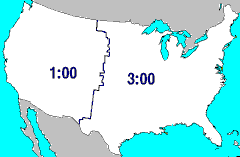Spring Ahead!
Over the past few days, people across the world have lost hours of sleep, due to the annual Daylight Saving (“Savings”) Time. This is a time when every time zone switches their clock forward an hour during the summer months to allow themselves more light during the evenings which leaves more time for work.
After the change, sluggish behavior and yawning plague our workplaces and schools. Billions of people are left exhausted the first week of the time change until they become accustomed to their new sleeping schedule. After a few months, fall comes back around and that is when Daylight Savings Time reverses, the evenings will go back to being pitch black before 6 o’clock shortening our days once again and giving us our hour of sleep back.
The original purpose for Daylight Savings Time was to allow later working hours for farmers during the warmer summer months when technology was not as advanced. Today, tractors, trucks, and trains all come with built on lights, or other necessities, allowing workers to carry on their jobs till late hours of the night. These improvements save both time and money, but what do these advancements mean for the time change now that it is not totally necessary?
There is a great deal of controversy over the issue of whether or not we should end the time change as a whole across the whole world. Those who wish to end the change, say this will help rid the burden of having to change your clock an hour two times a year and would also reduce the United States to only two different time zones instead of four. This will simplify traveling, commerce, and scheduling.


Those who wish to stick to the old way and keep the time change say that using DST is a better use of natural daylight, which would save us an overall great amount of energy and money on the use of artificial lights.
Despite the majority of the world that does use DST, there are a few areas that stick to one time zone. Arizona, Hawaii, and the overseas territories of American Samoa, Guam, the Northern Mariana Islands, Puerto Rico, and the United States Virgin Islands only have one specific time zone year round. In the United States, lawmakers from every state have argued over this issue for a while and every year, when the time change comes around, the debates start up and then slowly die down leaving the issue up in the air, but this year the debates are more heated than ever. Could this be the year the Daylight Savings Time comes to an end?


Hey! My name is Sharia Williamson. I am a seventeen year old student here at Alliance High School, and the senior editor, for the SPUD.
After I graduate...






